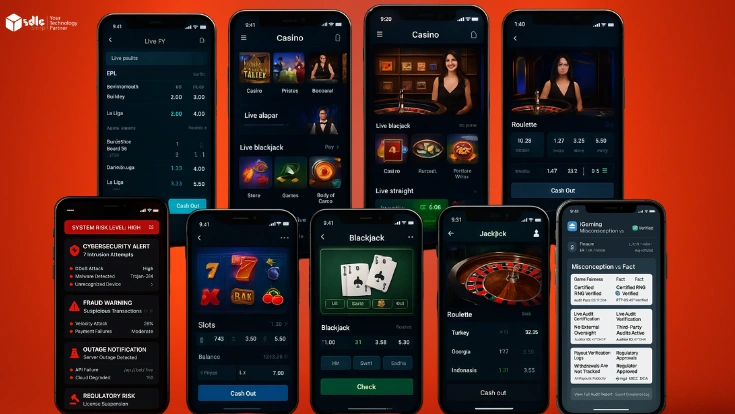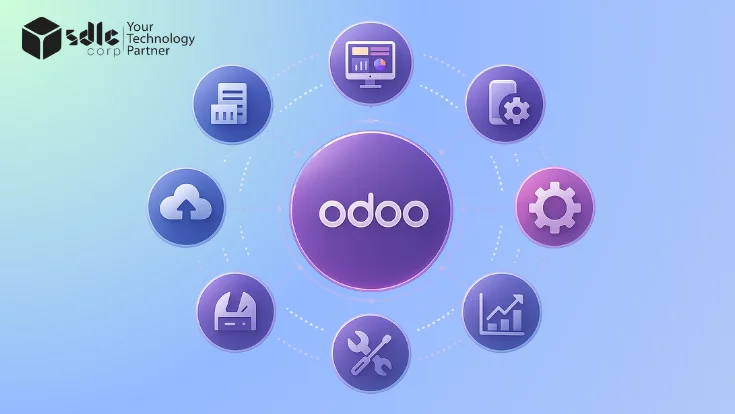Introduction
The debate between iPhone and Android users has been ongoing for years, and as we approach 2025, it’s becoming more fascinating to explore how both platforms have evolved. Technology is rapidly changing, and the way people use their smartphones has shifted dramatically. From the apps we use to the devices themselves, the user experience, and the ecosystem these phones create, there are clear distinctions that will continue to shape the future. Let’s dive deep into the key differences between iPhone and Android users as we head into 2025.

1. iPhone vs Android Users in 2025: Detailed Comparison
As we approach 2025, iPhone users will gain from Apple’s seamless environment, privateness-first method, and superb hardware. With constant updates and optimized overall performance, iPhones offer a uniform experience across devices. In comparison, Android users will revel in greater customization, a broader range of hardware options, and greater revolutionary features.
| Feature | iPhone (2025) | Android (2025) |
|---|---|---|
| Operating System | iOS, consistent updates, seamless integration with Apple ecosystem | Android OS, customizable, open-source with updates depending on the manufacturer |
| User Interface | Intuitive, uniform experience across all Apple devices | Highly customizable, varies across different devices and brands |
| Design | Premium design, uniform quality, rumored foldable iPhones | Variety of designs, from budget to premium, foldable technology |
| Camera Technology | Consistent, advanced computational photography, LiDAR for AR | Diverse options, more innovative hardware and AI-driven photography |
| App Store | Highly curated, secure, focuses on premium apps | Open, diverse, but less strict in app review processes |
| Privacy & Security | Strong privacy features, app tracking transparency | Privacy varies across devices, though improving with AI and encryption |
| Ecosystem | Unified across devices, excellent integration with Mac, iPad, and Apple Watch | Open ecosystem, more variety in hardware and software, integrates with Google services |
| Customization | Limited to iOS features, some customization options | Extensive customization, from UI to app behavior |
| Price Range | Premium, higher initial cost, longer lifespan | Wide range of price points, from budget to premium |
| Performance & Updates | Optimized performance, regular, uniform updates | Performance varies by device, fragmented updates, more options for upgrades |
The Android ecosystem thrives with flexibility, while the iPhone has more controlled premium experience. Both platforms will continue to appeal to different priorities, and form the form of the smartphone based on the user’s needs.
2. Operating System and User Interface
At the core of every smartphone is its operating system (OS), and this is where iPhone and Android users start to see the most significant differences.
| Aspect | iPhone: iOS Evolution in 2025 | Android: Diversity and Customization |
|---|---|---|
| Operating System | iOS with advanced AI capabilities, AR tools, and seamless integration | Android OS, highly customizable, deeper AI integration |
| User Experience | Consistent, fluid, and user-centric experience across all Apple devices | Highly customizable, allows users to modify home screens, notifications, and system apps |
| Privacy & Security | Focus on privacy and security, constant updates for better protection | Privacy varies by manufacturer, with security improvements across devices |
| Customization | Limited customization compared to Android | Extensive customization in UI, system apps, and notifications |
| Hardware Options | Limited to Apple devices (iPhone, iPad, etc.) | Wide variety of manufacturers (Samsung, Google, OnePlus) and price points |
| Updates | Uniform updates across all iPhones, ensuring a hassle-free experience | Updates vary by manufacturer and device, with some fragmentation |
| AI and AR | Advanced AI integration for better user experience and improved AR tools | AI integration, with varying levels of implementation depending on the manufacturer |
| Price Range | Premium pricing, with fewer options but a longer lifespan | A wide range of price points from budget to premium devices |
However, the fragmentation of Android devices is an ongoing challenge. Not all devices receive updates at the same time, and some older phones may not even get updates at all, leaving users with security risks and older features.
3. Hardware and Design

1. iPhone: Premium Design and Integration
Smooth, first-class design: The iPhone focuses on excessive quit finish and hardware at the top rate.
Top-level performance: Apple’s A-Series Custom speed and craft efficiency with pieces and 5G assistance.
OLED screen: Improved visual pleasure with the current OLED generation for high color accuracy and brightness.
Rumors Foldable iPhone: Potential folding layout provides mass screen function in a compact form version, competing with things like Samsung Galaxy Z boards.
Integrated Apple Ecosystem: Spontaneous integration between iPhones, iPads, and Mac machines allows for steady continuity and productivity throughout the things.
iPhone Game Development: Apple’s hardware and software synergy make iPhones a top choice for developers in the iPhone game development industry.
2. Android: Variety of Devices and Innovation
Wide sort of manufacturers: Android offers users many layout, hardware, and function alternatives.
Device range: From financial gadgets to flagships, Android has alternatives for every consumer.
2025 innovation: Expect greater foldable phones, below-display cameras, and a more appropriate OLED era across Android models.
Key brands using innovation: Samsung, Google, and Xiaomi are pushing the limits of cellular telephone generation.
Lack of unified surroundings: Android sacrifices a unified environment for a wider variety of gadgets.
Customizable alternatives: Users can choose gadgets based on size, digital camera size, battery existence, and more.
Inconsistent patron revel in: The experience can range significantly among Android models because of hardware variations.
4. App Store and Ecosystem
1. iPhone: an integrated ecosystem
Apple’s integrated ecosystem ensures spontaneous integration between iPad, iPad, MacBook, and Apple Watch in 2025. Features such as iMessage, Facetime, and Airdrop provide streamlined communication on Apple devices.
1. Own apps such as photos, maps and safari are adapted to the Apple ecosystem.
2. Apple Forest subscription packs more services for further convenience.
3. The tight app review process of the App Store ensures high-quality, safe, and well-cured apps.
4. Developers often prefer iOS-first growth due to the premium user base of the platform.
2. Android: openness and flexibility
1. The Open Source platform for Android allows extensive customization, unlike iPhone devices.
2. The Google Play Store provides many apps with the ability to install third-party sources.
3. Android -ecosystem integrates deeply with Google Services such as Google Assistant, Gmail, and Google Images.
4. Unmatched flexibility, catering provides food for different user needs.
5. The Google Play Store has a lower strict quality control than the Apple App Store, which allows a potentially low-quality or malicious app.
Additionally, Android users benefit from its openness for Android game development, making it a popular platform for developers to create innovative games for diverse audiences.
5. Camera Technology and Features
The camera has become a critical differentiator for smartphone users. As we move into 2025, both iPhone and Android phones will continue to push the boundaries of mobile photography.
iPhone: Consistency and Computational Photography
Apple’s iPhones are known for their consistent camera performance across different generations. iPhone cameras are backed by sophisticated computational photography algorithms, ensuring that photos are vibrant, sharp, and realistic. The introduction of LiDAR technology has also improved low-light performance and augmented reality experiences.
By 2025, the iPhone will likely feature improved AI-powered enhancements, cinematic video modes, and better image processing in low-light environments. Additionally, iPhone users can trust that their photos and videos are secured and stored privately within the Apple ecosystem. For businesses and developers seeking to create seamless experiences for iPhone users, iPhone app development can take advantage of Apple’s advanced technologies, including its camera capabilities.
Android: Innovation and Versatility
Android phones, especially flagships like the Google Pixel and Samsung Galaxy S series, are constantly innovating when it comes to camera technology. In 2025, we can expect multi-sensor systems, under-display cameras, and improved zoom capabilities. Android also benefits from Google’s software advancements in computational photography, making the Google Pixel one of the best for AI-powered image processing.
For users who want a wider variety of camera options, Android offers unparalleled flexibility. Manufacturers are pushing boundaries with features like 8K video recording, foldable phone cameras, and advanced zoom technology. Businesses aiming to harness Android’s innovation can benefit from Android app development to create apps that integrate seamlessly with Android’s diverse features and hardware.
Conclusion: The Future of iPhone and Android in 2025
As we move into 2025, the distinction between iPhone and Android users will continue to revolve around different philosophies. iPhone users will appreciate the premium, seamless experience Apple delivers through a unified ecosystem, top-tier security, and high-quality hardware. On the other hand, Android users will continue to benefit from flexibility, customization, and a variety of devices at different price points, making it a great option for those seeking a more personalized experience.
Ultimately, the decision comes down to personal preference. Whether you value customization, open-source flexibility, and hardware variety (Android) or consistency, privacy, and integration within a closed ecosystem (iPhone), both platforms will continue to shape the future of smartphones in 2025 and beyond.
FAQ'S
1. What are the main differences between iPhone and Android users in 2025?
iPhone users prioritize a unified ecosystem, consistent updates, and premium design, while Android users value customization, variety, and price options.
2. Which platform offers better camera technology in 2025: iPhone or Android?
Both excel in different ways: iPhone focuses on consistent, AI-driven photography, while Android offers versatile hardware with advanced zoom and sensors.
3. How do iPhone and Android compare in terms of privacy and security in 2025?
iPhone emphasizes strict privacy measures and seamless security updates, whereas Android offers varying levels of security depending on the manufacturer.
4. Which platform is better for app availability and quality in 2025?
The iPhone App Store is known for high-quality, curated apps, while Android’s Google Play Store provides a larger selection with more flexibility.
5. What are the price differences between iPhones and Android devices in 2025?
iPhones generally cater to the premium market, while Android offers a wide range of devices, from budget-friendly options to flagship models.
6. Which platform is better for gaming in 2025: iPhone or Android?
iPhone excels with optimized gaming experiences and exclusive titles, whereas Android offers more device choices and customization for gamers.














